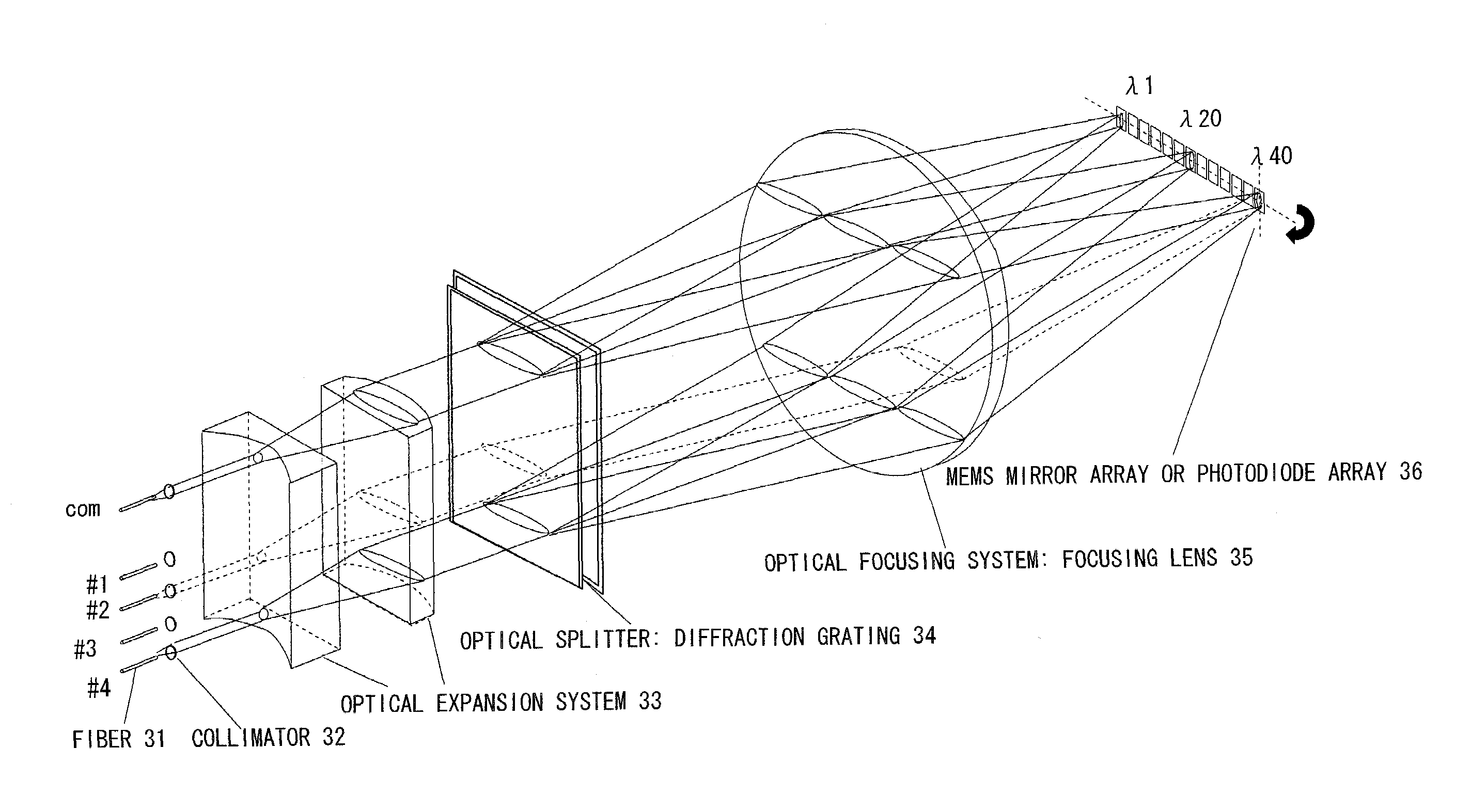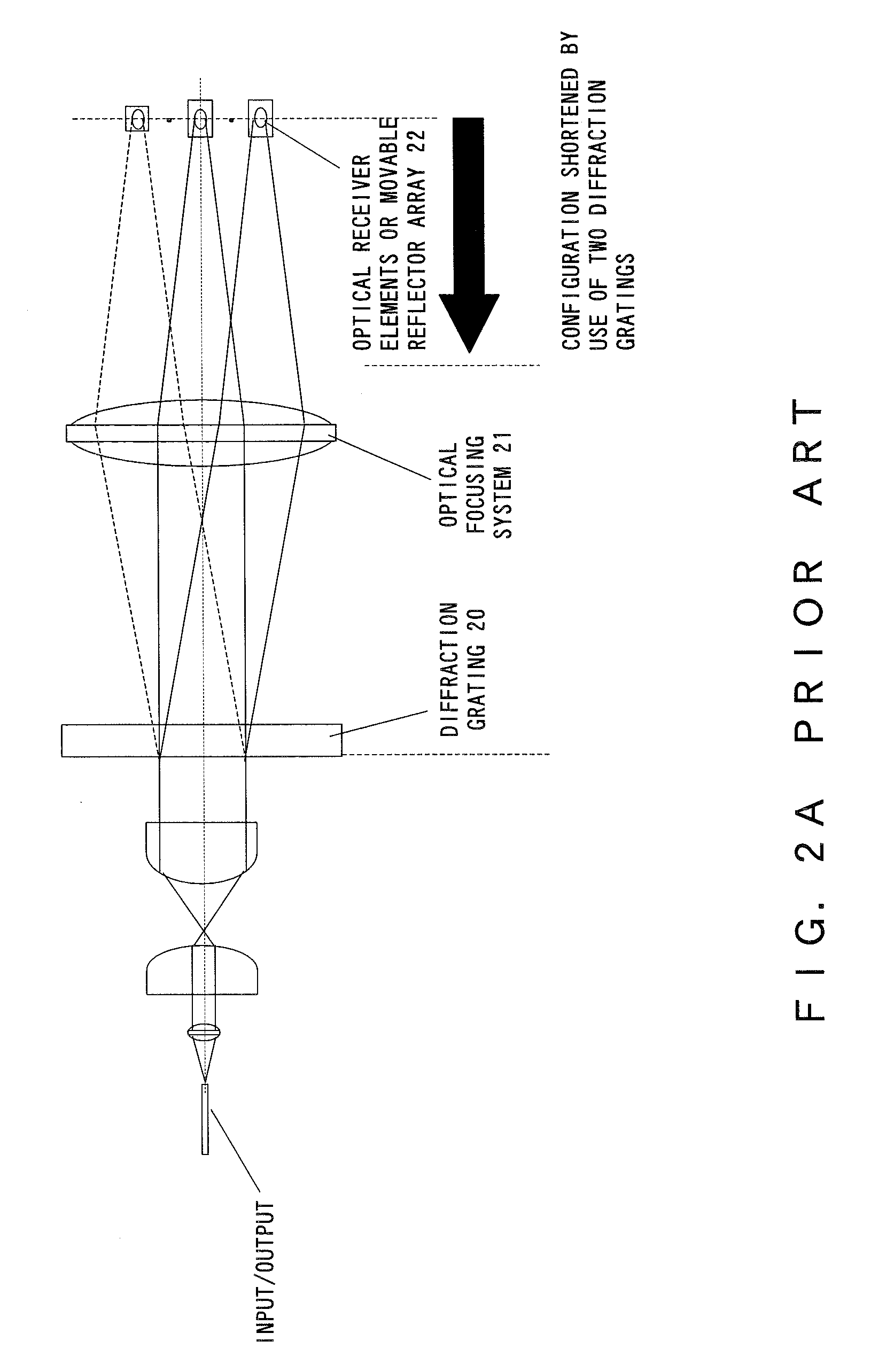Multiple-wavelength spectroscopic apparatus
a spectroscopic apparatus and multi-wavelength technology, applied in the field of spectroscopic apparatuses, can solve the problems of polarization dependent loss (pdl), difficult to achieve large angular dispersion and high diffraction efficiency, and different wavelength characteristics of the diffraction efficiency of p-polarized light compared to those of s-, and achieve low polarization dependence, favorable optical characteristics, and small size
- Summary
- Abstract
- Description
- Claims
- Application Information
AI Technical Summary
Benefits of technology
Problems solved by technology
Method used
Image
Examples
Embodiment Construction
[0043]The multi-wavelength spectroscopic apparatus of the embodiment of the present invention employs a plurality of diffraction gratings, in which for at least one pair of gratings there is a wavelength at which the diffraction efficiencies of p-polarized light and s-polarized light are equal and are respectively located around each end of the operating wavelength range, arranged so that the grooves of the diffraction gratings are approximately parallel, or a plurality of diffraction gratings, for which the maxima / minima of the diffraction efficiencies of p-polarized light and s-polarized light are inverted in the operating wavelength range, arranged so that the grooves of the diffraction gratings are approximately parallel.
[0044]FIGS. 6A-6C are diagrams explaining a first principle of the embodiment of the present invention.
[0045]In the examples of FIGS. 6A-6C, as shown in FIG. 6A, the first diffraction grating is a diffraction grating designed so that the diffraction efficiency o...
PUM
 Login to View More
Login to View More Abstract
Description
Claims
Application Information
 Login to View More
Login to View More - R&D
- Intellectual Property
- Life Sciences
- Materials
- Tech Scout
- Unparalleled Data Quality
- Higher Quality Content
- 60% Fewer Hallucinations
Browse by: Latest US Patents, China's latest patents, Technical Efficacy Thesaurus, Application Domain, Technology Topic, Popular Technical Reports.
© 2025 PatSnap. All rights reserved.Legal|Privacy policy|Modern Slavery Act Transparency Statement|Sitemap|About US| Contact US: help@patsnap.com



